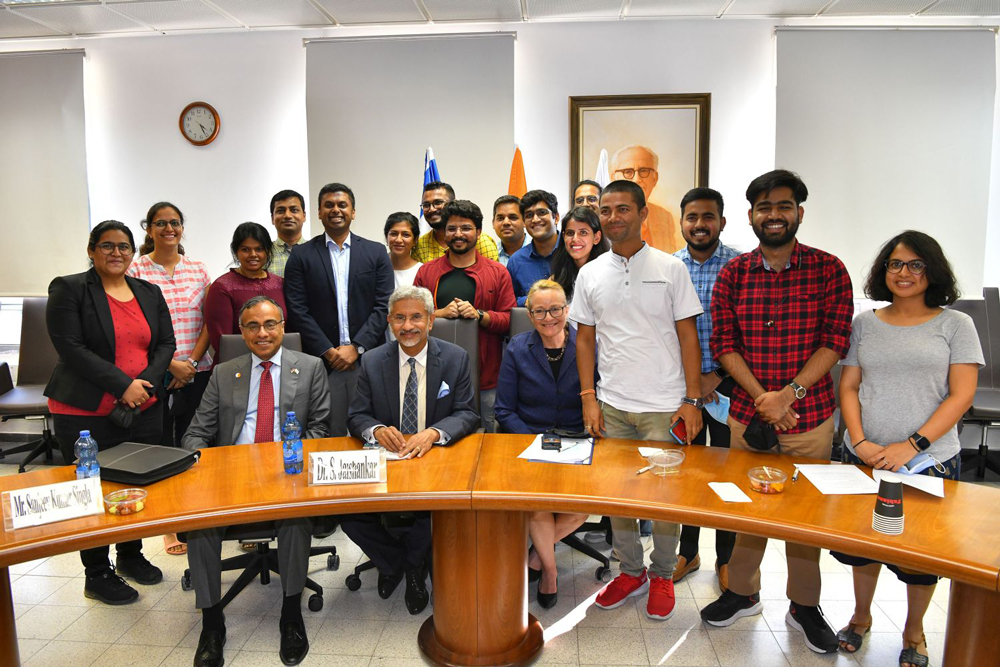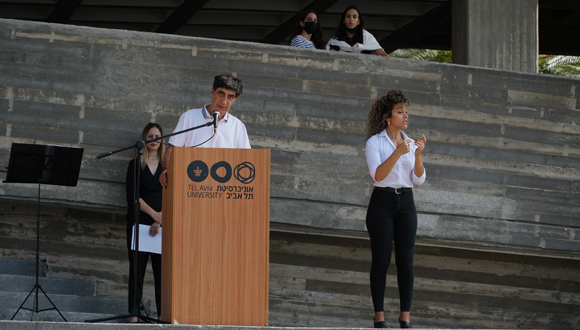Like Teenagers on Vacation
Light pollution can impair crickets’ reproductive process and threaten their survival.
A joint study conducted by researchers from Tel Aviv University and the Open University of Israel revealed that exposing male crickets to artificial light at night (ALAN) can impair their activity cycles. According to the researchers, nocturnal chirping is the male’s way of calling females to come and mate with him, and its disruption can interfere with reproduction processes and even endanger the entire species. Previous studies worldwide have shown that light pollution is harmful to many species of animals and plants. The researchers call for reducing ALAN as much as possible to enable coexistence in the night environment.
Humans are Driving Away the Darkness
Keren Levy of the School of Zoology and the Steinhardt Museum of Natural History at Tel Aviv University explains: “The distinction between day and night, light and darkness, is a major foundation of life on earth. But humans, as creatures of the day who fear the dark, disrupt this natural order: they produce artificial light that drives away the darkness and allows them to continue their activities at night.”
Levy explains that today, more than 80% of the world population live under light pollution, and the overall extent of artificial light at night rises by 5% every year. This negatively impacts the environment and affects natural behaviors that have developed over millions of years of evolution. The artificial light at night affects the length and quality of sleep of many animals, leads to high mortality, and changes the activity cycles of many creatures. For example, dung beetles, that navigate using the Milky Way, lose their way when light pollution increases; sea turtles hatchlings seek the brightest surface in sight – supposedly the sea, and reach the nearby promenade instead; to mention just two of many examples.
Off-Tune Crickets
In the current study the researchers examined the impact of light pollution on the field cricket, a nocturnal insect whose chirping can be heard during the nights of late summer – when males call for females to mate with them.
Prof. Amir Ayali, also from TAU’s School of Zoology and the Steinhardt Museum of Natural History, explains, “In nature, crickets exhibit a very regular cycle of activity. Chirping behavior, calling for females, occurs at sunset and during the night, ending in the morning. We exposed field crickets to different levels of lifelong ALAN and observed its impact on two fundamental behaviors: chirping and locomotion.”
The researchers monitored dozens of crickets that were exposed throughout their lives (from egg to adult stage) to four types of light conditions. They found that crickets whose light-dark cycle is disrupted behave like teenagers on vacation: active or asleep according to their own inner clock or lacking any rhythm whatsoever.
“In fact,” adds Keren Levy, “light pollution induced by humankind impacts the field cricket and evokes loss of synchronization within the individual, on the population level, and between the population and the environment. Our findings on ALAN-induced changes in calling song patterns may possibly impair female attraction and reproduction in this species. Our results are in accord with many other studies demonstrating the severe impacts of low levels of ALAN on nature.”
Levy urges us all to help protect our environment and surroundings by turning off the lights in our backyards, on the terrace, in parking lots, and wherever possible: “Help us bring the night and the milky way back into our lives and enable nightly coexistence with the creatures around us.”
The study was led by Prof. Amir Ayali and Keren Levy of the School of Zoology and the Steinhardt Museum of Natural History at Tel Aviv University and Prof. Anat Barnea of the Department of Natural and Life Sciences at the Open University. Yoav Wegrzyn from Prof. Ayali’s laboratory and Ronny Efronny also took part in the study. The paper was published in Proceedings of the Royal Society B, and also mentioned in Nature.
Featured image: Prof. Amir Ayali and a small friend (Photo: Jonathan Blum)




















